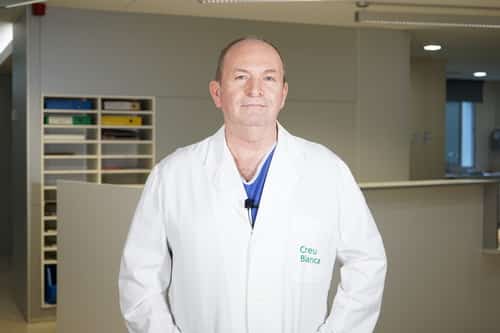- Burns can be minor medical problems or constitute very serious health emergencies. There are different types, and each requires specific care.
Definition
According to the WHO, “A burn is an injury to the skin or other organic tissue primarily caused by heat or due to radiation, radioactivity, electricity, friction, or contact with chemicals.”
Heat burns occur when some or all of the skin cells or other tissues are destroyed by hot liquids (scalds), hot solids (contact burns), or flames.
Types of burns
- First-Degree Burns
First-degree burns are mild burns that affect only the outer layer of the skin (epidermis).
They can cause redness, pain, and dryness of the skin but do not present blisters.
They usually heal in less than a week and do not leave lasting effects.
- Second-Degree Burns
Second-degree burns affect both the epidermis and the second layer of skin (dermis). They can cause swelling and make the skin look red, white, or blotchy. In this type of burn, the skin regenerates completely and usually does not leave scars from the injury. Second-degree burns can be differentiated into superficial (or partial-thickness burns) and deep (or deep partial-thickness burns).
Superficial: These affect both the epidermis and the dermis (second layer of the skin). The main associated symptoms are intense pain and the presence of blisters or vesicles.
Deep: These involve severe damage to the middle layer of the skin and to the sweat or oil glands. The symptoms associated with these injuries include loss of skin and charring.
- Third-Degree Burns
Third-degree burns (or full-thickness burns) are the most severe type of burns. They affect all layers of the skin, including the deepest layer (hypodermis).
These injuries destroy subcutaneous tissues and can damage blood and lymphatic vessels, nerve endings, sweat glands, muscles, and even bones.
The associated symptoms include the loss of skin layers, a leathery black or whitish appearance of the burn, edema or swelling, necrosis, and secondary infection.
There is an absence of pain or insensitivity in the affected area because the nerve endings have been destroyed.
Treatment
Every burn should be assessed by a doctor as soon as possible to diagnose the severity and provide appropriate treatment.
If the burns are minor and affect a small area of the body surface, they can be treated on an outpatient basis. For all other burns, hospitalization will be required.
- Initial care: Ensure that the cause of the burn has been eliminated by removing the person from the heat source, if applicable. If it is a chemical burn, remove clothing and substances that may have been contaminated from the affected area, and remove rings, bracelets, etc., from the affected area before swelling or edema occurs.
- Only for first-degree burns can moisturizing creams such as Aloe be applied. Try to refrigerate the cream first.
- Do not apply ice directly to the burned area. Cool the affected area with cold water, ensuring the stream does not directly hit the burn. Cold compresses can also be used.
- It is not recommended to apply ointments, salves, or oils to the burn unless directed by a doctor, as they can increase the heat in the area.
- For second-degree burns, blisters should never be opened unless decided by a doctor, as this could contaminate the wound.
- In case of a chemical burn to the eyes, they should be washed immediately with water for several minutes.
- For more severe burns, the doctor will decide how to proceed with treatment, depending on each individual case, and may prescribe an antibiotic ointment and pain relievers.
- All burn patients should maintain adequate hydration.
For any burn, it is necessary to visit an Emergency or General Medicine doctor to perform a thorough examination and determine the required treatment.
The Emergency Service at Clínica CreuBlanca Barcelona and Hospital CreuBlanca Maresme offers assistance 24 hours a day, 365 days a year, to treat any type of burn that requires immediate care. After an initial assessment by the nursing team to evaluate the situation, a specialized emergency service doctor will assess the need for further tests and refer you to the appropriate specialty.

